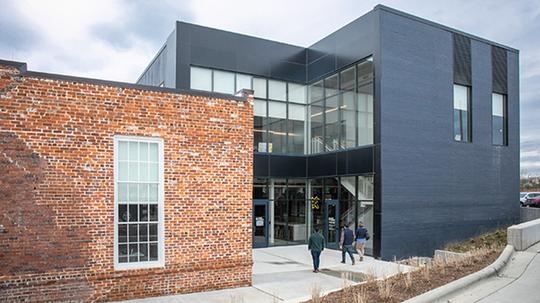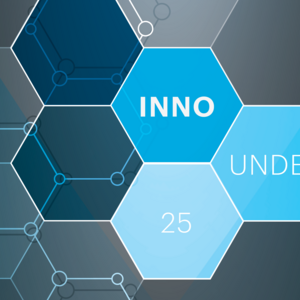
The energy industry has seen incredible breakthroughs in recent years. From solar power to hydraulic fracturing, the resources we now take for granted all started out as a simple idea. Without the resources to further innovate, it’s likely that growth within the industry would become stagnant.
That’s exactly what Duke Energy realized in 2016. Historically, the energy industry — particularly utilities — has planned for capacity constraints, anticipating sharp increases in the amount of energy people are using. But after analyzing load growth year over year, Duke Energy quickly ascertained that demand was decreasing: Where once the metric climbed multiple percentage points, now the industry only saw flat, half-percentage growth.
This realization meant the 116-year-old company would need to make significant changes to its business model in order to meet customers’ expectations. It also meant that incorporating an innovation center was no longer optional — it was necessary.
Sometimes Seeing Is Believing
Rethinking an age-old industry is no easy task, but that’s precisely what Brian Savoy, senior vice president of business transformation and technology at Duke Energy, set out to accomplish.
“In his view, he believed an innovation center would enable people to be in a space that was conducive to collaboration and experimentation,” recalls Catherine Butler, manager of corporate communications at Duke Energy. “Around 2016, he really went full force into this and talked to the CEO about the importance of bringing in an innovation center.”
But a simple conversation wasn’t all that won over Duke Energy’s executive leadership. Savoy went the extra mile by taking the executive team out to Silicon Valley to see how innovation centers were transforming the way companies worked.
“I think that trip was very important because it opened the eyes of executives who were more resistant to the idea, and they had a chance to see innovation firsthand,” Butler said.
Shortly after the trip, Savoy and his team began scouting locations for what would become Duke Energy’s innovation center. Finding a suitable location meant setting specific criteria, which — according to Savoy — meant being close to the light rail and close enough to Uptown Charlotte that it would be convenient, yet far enough away that it felt like its own space. And (of course) it had to be “cool.”
After scouting a number of possible venues, their quest to find the perfect space took the team back in time to a former textile mill, now called Optimist Hall.
“What’s fascinating about this is Duke Energy was started a long time ago because mills in the Carolinas needed power, so we dammed the Catawba River to provide electricity for the mills,” Butler said. “It’s really cool to see it come full circle.”
Lighting the Way for Big Ideas
Much of Optimist Hall’s interior has been preserved, with the 83,000-square-foot building still proudly sporting its original hardwood floors. But some changes were required in order to build a space truly designed to facilitate collaboration and creativity.
“We worked with other companies on architecture and floor design to find what works well and what drives collaboration,” Butler explained. “We developed a Think Tank space where people have the ability to work in an open environment. But we also have breakout rooms in different colors to promote creativity and ideation.”
With the right location chosen and floor design in place, Duke Energy launched its flagship innovation program, Lighthouse, in 2018. The program invites team members across different departments to work on-site at Optimist Hall and develop special projects.
“We have a number of folks that are dedicated members of the innovation center, but we also bring in people from other parts of the business,” Butler said. "How long they’re there really depends on the timeline for what product they’re working on.”
Product development through the innovation center is supported by a set bucket of “innovation dollars.” When a team member has an idea, they must present their case for why it’s worth exploring in order to secure initial funding for a short period of time. By the end of that period, they must prove the idea’s value in order to secure additional funding for exploration.
“It’s been a great way to experiment, but also fail fast and pivot,” Butler said.
Through Lighthouse, innovators were able to identify a way to use fly-over drones to conduct thermal imaging and screening of solar panels that once required manual testing by employees. Now the drones use artificial intelligence and machine learning to deliver actionable insights to workers about specific panels that need maintenance, making the work more efficient while increasing employee safety.
“We’re also starting to explore how we might use these same principles to categorize vegetation management,” Butler said. “The Carolinas are prone to thunderstorms and hurricanes, so it’s important to trim the trees so they don’t fall on power lines. We’re hoping to use the drones to help us prioritize vegetation management so we can quickly develop schedules and help teams be more efficient.”
Building Up to Innovation
As Duke Energy continues to drive industry change, Butler is quick to point to Savoy’s determination in helping to make this possible.
“Brian spent a lot of time before launching an innovation center helping our leadership team understand why this was so important,” Butler said. “You need to make sure that you really have your leadership team ready to explore something different.”
But according to Butler and the team, a successful innovation center should also encourage employees to experiment, fail fast and pivot. Additionally, having a dedicated team while rotating employees in and out of the program will help create a grassroots movement and provide increased return on your innovation investment.








